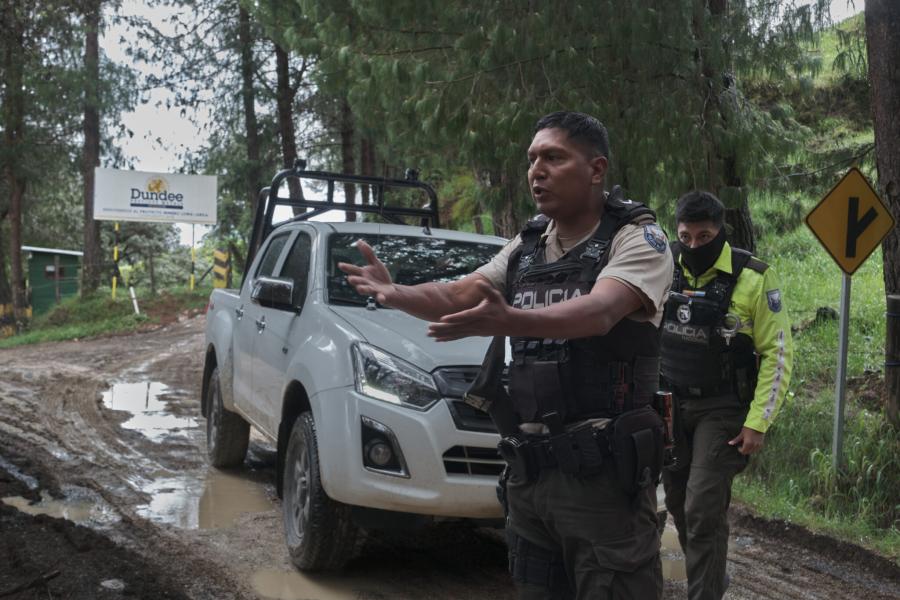
On October 12th, Tsilhqot’in People gathered at Fish Lake in British Colombia to inaugurate a totem pole at a new conservation area covering 800,000 acres to be managed by the Tsilhqot’in First Nation of Canada. The park, whose official name is Dasiqox Tribal Park, is known as ‘Nexwagwez?an’ , meaning “it is there for us” in the Tsilhoqot’in language.
The park was created as a response to the threats of misuse to the area by Canadian mining company Taskeo, who have insisted on establishing a gold mine on the sacred spiritual and cultural site for the past decade, despite repeated rejection by the native communities who have been using this land as a ceremonial and cultural site for centuries.
The new park is just outside the Tsilhqot’in-Nemiah Aboriginal Title area recently recognized by the Supreme Court of Canada, but is still considered within the claimed aboriginal title and rights area. It represents an intriguing and innovative response to the colonial occupation of territory by Canadian government. The founders of Dasiqox Tribal Park explain,
“A Tribal Park is an assertion of physical space on the basis of Indigenous Law, established throughout Canada as a reaction to the Crown’s assumed authority. They often arise as a result of industrial economic activities that are incompatible with the original people’s values. Tribal Parks are also an exercise of Section 35 of the Canadian Constitution and are developed and managed by Indigenous peoples to integrate traditional ways of life, rights and responsibilities, with ecologically sound commercial activities. Internationally, Tribal Parks are recognized as Indigenous peoples’ and community conserved territories and areas, or ICCAs.
The Tsilhqot’in communities, Yunesit’in and Xeni Gwet’in, chose to organize the creation of Dasiqox Tribal Park as a means to design an alternative plan, based on years of political and legal struggles, years of research on the importance of our unique ecosystem, and the constant threat of industrial logging and mining activities. These struggles were highlighted by the recent Supreme Court of Canada decision on June 26, 2014 that unanimously awarded Title to the Tsilhqot’in Nation. In addition, the Tsilhqot’in Nation has successfully protected Teztan Biny (Fish Lake) through two Canadian Environmental Assessments, with the latest rejection of a mine issued on February 26, 2014. It is the view of the Tsilhqot’in Nation that the high cost of conflict requires a proactive approach that respects Indigenous authority to this cultural and environmentally sensitive area."
The park will form part of a larger network of provincially protected areas, made up of 5 adjacent parks, that is as large and significant for wildlife as the Yellowstone National Park in the US. The land will be managed in a way that is consistent with Tsilhqot’in values. This will include care for threatened wildlife populations including wolves, grizzly bears, deer, moose and salmon, as well as the stewardship of fresh water and forest resources. As well, it will highlight the protection and promotion of Tsilhqot’in archeological sites and spiritual sites, of which there are many surrounding Fish Lake. They are also open to using the land for economic development projects that would benefit Tsilhqot’in people while in keeping with the protection of the environment.
Meanwhile, Taseko Mines have recently applied to bring a civil suit against the federal review panel for rejecting their project application for the mine, essentially suing the federal government of Canada for damages to cover the cost of their failed designs. A company spokesperson said this does not mean they are giving up plans to see New Prosperity Mine developed. “Not by any stretch are we giving up on this,” said Brian Battison, Taseko’s vice-president of corporate affairs. Taseko initially sought permits for a mine project that would have drained Fish Lake to create a “tailings pond” or toxic waste water dump site, in its place. The Tsilhqot’in successfully organized to prevent those plans, and the company created an alternative design, but that was determined to be equally harmful to the surrounding environment. The company, whose stock has been plummeting, estimated that it has spent $140 million trying to develop the $1.5 billion New Prosperity mine, and calculated the loss of potential revenue to be $2 billion.
Reaction by the public commentary to Tasesko’s suit has been critical: “Every penny that Taseko has spent on their efforts has been at their risk. To suggest that the costs of rolling the dice on what numerous environmental assessments have found to be a bad project, there should be no expectation of those risks being "eaten" by the taxpayer. Those costs are between Taseko and their shareholders,” noted one comment.
Read more about the new Tribal Park, here: http://www.dasiqox.org/



